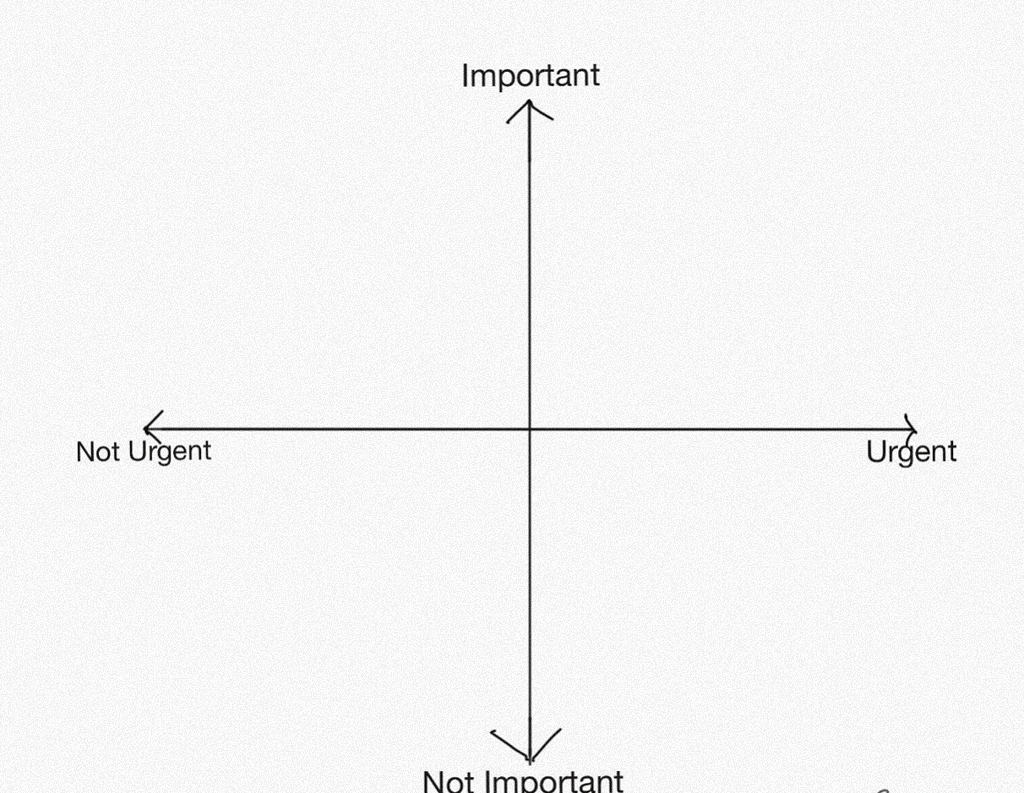The Eisenhower Decision Matrix is an easy-to-use, effective tool for establishing priorities and increasing daily productivity. It is a visualization tool that forces you to distinguish between urgent and important tasks.
Important and Urgent (“Do Now”), Important and Not Urgent (“Decide”), Not Important and Urgent (“Delegate”), and Not Important and Not Urgent (“Delete”) are the four quadrants of the 2×2 matrix.
The objective is to devote more time to activities that advance your long-term values, missions, goals, and principles. In terms of the Eisenhower Decision Matrix, manage the upper right, optimize the upper left, and eliminate the lower half.

Ultimate Productivity Instrument
Everyone has been there.
Scrambling from one task to the next, shifting from one stressful emergency to the next. As soon as one fire is extinguished, another is ignited. The day becomes an exhausting struggle for survival.
Worst aspect? In the end, it is difficult to identify substantial progress. It was, if you will, a “rocking horse” day, with lots of activity but no forward progress.
Today, I’d like to discuss a straightforward, immediately implementable solution to this all-too-common issue. For context, a brief history lesson…
Dwight D. Eisenhower
Dwight David Eisenhower, or Ike as his friends called him, was an American military officer and politician who was born in 1890 in Denison, Texas.
He graduated from West Point and rose through the ranks of the United States Army to achieve the 5-star rank of general. During World War II, he commanded the Allied Expeditionary Force in Europe and led the famous Normandy invasion from the Western Front.
Eisenhower served as the president of Columbia University and the first supreme commander of NATO prior to his election as the 34th president of the United States from 1953 to 1961.
Eisenhower was a highly effective leader and executive, as his military and civilian accomplishments demonstrate. He became renowned for his prolific, almost supernatural output.
His mystery? “What is important is rarely urgent, and what is urgent is rarely important,” he never conflated. – Dwight D. Eisenhower
With this as a foundation, let’s examine the prioritization and productivity solution of today…
Eisenhower’s Determination Matrix
The Eisenhower Decision Matrix is an easy-to-use, effective tool for establishing priorities and increasing daily productivity. It is a visualization tool that forces you to distinguish between urgent and important tasks. Stephen R. Covey’s famous 7 Habits of Highly Effective People popularized the matrix.
How the 2×2 matrix operates:
Not Urgent to Urgent: X-Axis
Not Important to Important on the Y-Axis
Two critical definitions:

Urgent: requiring immediate and focused attention.
Important: advances your long-term values, objectives, or principles.
The Eisenhower Decision Matrix contains four quadrants:
Important & Urgent
Important & Not Urgent
Not Important & Urgent
Not Important & Not Urgent
A brief analysis of each…
Important & Urgent
These are the tasks that are both essential and time-sensitive.
However, they also contribute to our long-term vision, objectives, or guiding principles.
I refer to these as “Do Now!” tasks. They are time-sensitive and contribute to genuine forward movement.
Important & Not Urgent
These are the essential but non-urgent tasks.
I like to think of these activities as the compounders, or the activities that add value to your life over time. The most successful individuals in the world are able to concentrate their efforts on these tasks.
Here is where you should invest the majority of your time and effort. You can choose when to attack them, but this quadrant must take precedence.
Not Important & Urgent
These tasks are not essential, but they are urgent and require immediate attention.
These tasks fall under the “beware” category, as they can consume time and energy without contributing to our ultimate objectives. These are the fires or random occurrences that leave you exhausted but without significant progress.
These are responsibilities to delegate to someone else, preferably someone to whom they will be crucial.
Not Important & Not Urgent
These are the activities that are neither essential nor urgent.
Television and social media are examples of mindless activities that sap our productivity. Limit your time as much as possible on these activities.
Sahil Note: If these mindless activities help you re-energize, they may be “important” to you in small amounts. I find that watching television before bedtime helps me unwind and fall asleep with a clear head. There is no need to eliminate that from your life; simply be honest with yourself regarding the point at which it no longer provides you with value. Schedule time for these activities if you struggle to be disciplined with them, as I did in the past.
The Overall Picture
So then, let’s put everything together. What is the objective?
Devote more time to tasks that advance your long-term values, missions, objectives, and principles.
In terms of the Eisenhower Decision Matrix:
Control the upper-right
Focus on the upper-left
Remove the lower portion
Conclusion
To implement the Eisenhower Decision Matrix in your life, you must first determine your priorities.
Several questions to help you get started:
What are your long-range objectives?
Which principles and values do you intend to uphold?
What daily activities contribute to these objectives, principles, and values?
Try organizing and carrying out a week or even a single day using the matrix. I use it weekly and absolutely adore it.
There are numerous free online tools that can help you structure your productivity practice using the Eisenhower Decision Matrix. I use a Notion template, but other pre-built templates are readily available. You can also use a notebook like Ike and do it the old-fashioned way!
Try it out and let me know your thoughts.




0 Comments